What Are The Most Essential EdTech Tools?
100+ Essential EdTech Tools for Teachers (2026 Update)
The most essential EdTech tools help teachers plan lessons, deliver instruction, assess learning, support accessibility, and manage classroom workflows without overwhelming students or staff.
Technology and education are deeply intertwined, and nearly every teacher has a few favorite tech tools that make planning, teaching, and connecting with students a little bit easier.
Yet as with anything related to technology, new tools are hitting the market constantly and older ones evolve, broaden their scope, or fade out of use. That can make it hard to keep up with what’s current and classroom-ready—even for the most tech-savvy teachers.
Here, we’ve compiled a list of 100+ essential EdTech tools, including some that are increasingly popular and widely used, that can be part of any teacher’s toolset this year. If you’re looking for broader context, see our overview of what education technology is and our examples of education technology.
Pricing legend: [Free] = completely free; [Free/Edu] = free for verified educators or schools; [Free/Pro] = free for basic use with paid upgrades; [Paid/Trial] = primarily paid, often with a free trial or education discount.
Learning Content, Interactive & Assessment Tools
These essential edtech tools can help you make lessons fun, interesting, and more effective. Many combine content, interaction, and formative assessment. For more ideas, see our resources on teacher tools to create online assessments and smart tools for digital exit slips.
- Prodigy
Motivate learners and differentiate math content with an adaptive gamified learning platform for students in grades 1–8. - NoRedInk
Assign authentic assessments, adaptive practice, and high-interest content to support writing and grammar skills, including parts of speech, commonly confused words, citations, and organization. - CommonLit
Used by tens of thousands of schools, CommonLit provides a large library of leveled texts. Filter by grade level, genre, lexile, theme, device, and more, then assign questions and formative assessments. - Newsela
Publishes up-to-date articles on a range of topics and allows teachers to differentiate text complexity based on student reading levels, aligned to standards. - Code.org
A nonprofit platform that offers curated resources to help students learn to code, progressing from block-based to text-based programming. - IXL
Provides comprehensive K–12 curriculum in math, language arts, science, social studies, and Spanish, with analytics, diagnostics, and awards for student performance. - GeoGebra
Free online tools for graphing, geometry, and whiteboarding, supporting interactive math exploration. - edpuzzle
Turn any video (YouTube, Khan Academy, Crash Course, etc.) into an interactive formative assessment by embedding questions and notes. - Nearpod
Gives live insights into student comprehension via interactive lessons, videos, activities, and gamified checks. - Quizizz
Design or discover gamified quizzes and interactive lessons for any content area and grade level. - Formative
View student work in real time, provide feedback, track growth, and collaborate with other teachers in a single platform. - Pear Deck
An interactive presentation tool (integrated with Google Slides and PowerPoint) that lets you embed questions and gather responses during instruction. - Desmos
A free suite of math tools including graphing and scientific calculators and interactive classroom activities guided by rich pedagogy. - Floop
Provide feedback with drag-and-drop comment banks anchored to specific locations on student work. Supports guided peer review and metacognitive prompts. - SplashLearn
Helps differentiate instruction by identifying gaps in learning, grouping students, and creating personalized math plans. - Google Lens
Translate text, look up word meanings, schedule events, make calls, identify objects, and more—often used by students for instant help and information. - playposit
Create interactive video experiences where learners answer questions, receive feedback, and move at their own pace. - Whiteboard.fi
A free online whiteboard tool (part of Kahoot) where teachers can pose questions and see student responses in real time on individual boards. - bulb
An online platform that tracks instructor curriculum, professional development, and student work, embedding thousands of apps and tools. - EducationCity
Curriculum-mapped instructional resources for elementary students, including content and assessments aligned to standards. - Khan Academy
Extensive free collection of lessons and practice across math, science, humanities, and finance, often used to supplement core curriculum. - MangaHigh
Offers game-based learning resources in mathematics, helping students practice through engaging challenges. - FunBrain
A collection of educational games, especially for math and reading, suitable for elementary and middle grades. - Educreations
An interactive whiteboard and screen recording tool that lets teachers or students create instructional videos on the iPad or web. - Animoto
A simple way to create video-based lessons and presentations and share them with students. - Socrative
A student response system available on computers and mobile devices that enables quick quizzes, games, and instant feedback. - To be updated
- StudySync
A full digital ELA platform with a text library, writing practice, peer review, and multimedia lessons aligned to standards.
Lesson Planning, Design, & Creation Tools
Use these essential edtech tools to pull together great lessons and design memorable student projects. For more planning support, see teacher resources for lesson planning templates and tools and our guide to data visualization tools.
- Canvas
A full-featured learning management system. Upload curriculum, integrate apps, differentiate assessment, track progress, and access shared resources. - HyperDocs
Digital lesson plans that embed an entire lesson or mini-unit in a single document with links, directions, and assessments. - Google Sites
Build a simple class website to host files, links, lesson plans, forums, and course information—for students or parents. - Google Forms
Create and share surveys, check-ins, and quick assessments; export responses to spreadsheets for deeper analysis. - Mentimeter
Supports remote and hybrid learning with interactive presentations, polls, and word clouds that surface student thinking. - Wakelet
Collect, organize, and share resources with students, colleagues, or professional learning communities in visual collections. - Teachers Pay Teachers
A marketplace where teachers can buy and sell classroom materials, from worksheets to full units. - Timetoast
A tool for creating sleek, interactive timelines—useful for history, biographies, or project sequences. - Prezi
A presentation platform that enables dynamic, zooming presentations, often used as a more visual alternative to slides. - Quizlet
Create digital flashcards, study sets, and games to help students memorize and review key concepts. - MasteryConnect
Helps track student performance against standards and manage common assessments and benchmarks. - YouTube
A massive repository of video content; many teachers use playlists or channels to support instruction. - TED-Ed
Subject-organized videos and lessons that can help introduce or deepen understanding of a wide range of topics. - Duolingo
A popular language-learning platform that can supplement world language instruction with gamified practice. - Snap!
A visual, drag-and-drop programming language from UC Berkeley with advanced features suitable for introductory computer science. - Scratch
A free coding community from MIT where students program interactive stories, games, and animations. - Bubbl.us
A simple concept-mapping and brainstorming tool designed to reduce distractions and focus on ideas. - Anchor
A podcasting tool (by Spotify) that lets users create, distribute, and monetize podcasts for free.
Classroom Management, Organization, & Workflow Tools
These essential edtech tools help you stay connected, organized, and efficient as you build multimedia lessons and manage your classroom. For more, see our collections of Google Classroom tools and Google Drive sync tools.
- Remind
Send text messages, images, and files to individual students, entire classes, or groups—without sharing personal phone numbers. - Google Voice
Provides a separate phone number for calls, texts, and voicemail, helping teachers maintain boundaries while staying in touch with families. - Zoom
Stream live video lessons, host remote office hours, and use chat and breakout rooms to support hybrid learning. - Extra: Educational technology continues to evolve, offering a wide range of tools that enhance learning and streamline classroom workflows. One such tool is Convert PDF to MS Excel , which allows educators to extract and organize data from PDFs into spreadsheets, making lesson planning, grading, and data analysis more efficient and accessible.
- SendSpark
A screencasting tool that lets you record and share video messages and see when they’re viewed. - MachineTranslation.com
An educator-friendly AI translation platform used to localize syllabi, worksheets, LMS modules, IEP-adjacent documents, and district communications at scale. It aggregates outputs from multiple engines with quality insights and glossary control. - Canva
A design tool with templates for newsletters, infographics, social posts, presentations, and more—widely used for classroom visuals. - QR Code Generator
Quickly create QR codes from URLs, files, or media; teachers use them on handouts, posters, hyperdocs, and for quick checks for understanding. - Storyboard That
A digital storytelling tool for creating storyboards with graphics, text, and multimedia elements. - Grammarly
An AI-powered writing assistant that helps improve clarity, grammar, and style in student and teacher writing. - ZipGrade
Scan and grade multiple-choice assessments with a mobile device, then conduct item analyses and tag questions by standard. - iMovie
A video-editing tool for Apple devices; helps students and teachers create narrated, multimedia projects. - Kami
A PDF and document annotation tool that lets students highlight, type, draw, and comment on digital documents. - Touchcast
Turns lessons into interactive videos with live feedback, polls, and Q&A, alongside automatic transcription. - Storybird
A creative writing platform filled with visual prompts and challenges to inspire student writing. - Draw.io
A free diagramming app for designing and sharing diagrams, charts, and maps—works well with Google Drive. - Adobe Scan
Turn physical documents into PDFs with your phone or tablet, useful for sharing and archiving classroom materials. - MIT App Inventor
An intuitive, visual programming environment that lets students build functional apps for smartphones and tablets. - Discord
An online discussion and voice platform that can host clubs, student groups, and professional learning communities. - Piktochart
Create infographics, presentations, and reports with templates suitable for classroom and school communications. - PosterMyWall
Design social media graphics, videos, posters, and more using templates and simple editing tools. - Countdown Timer
A simple visual timer you can display so students can manage time during activities without constant reminders. - ClassroomQ
A digital queue that lets students “raise their hand” for help and see their place in line, so you can manage support efficiently. - Coolors
A color-palette generator that helps you create visually coherent slides, posters, and digital materials. - Evernote
A note-taking and organization app for capturing ideas, photos, recordings, and documents and keeping them in sync across devices. - To be updated
- Google for Education
A suite of tools including Gmail, Docs, Drive, Classroom, and other resources tailored for schools. - Dropbox
Cloud storage for easily saving, sharing, and accessing files from anywhere. - Diigo
A social bookmarking tool that lets you highlight, annotate, and save webpages for later reading or class use. - Minecraft: Education Edition
A game-based learning platform that supports collaborative, creative, and standards-aligned projects. - Popplet
A mind-mapping and brainstorming tool for capturing and organizing ideas visually. - Google Earth
A powerful tool for geography, environmental science, and social studies projects that require exploring real-world locations. - DonorsChoose
A crowdfunding platform that connects teachers with donors to fund classroom projects. - SlideShare
Upload and share presentations and documents, and access content created by others. - LiveBinders
A digital binder for collecting and organizing resources, with collaboration and sharing features. - Extra: Convert PDF to MS Excel
A category of tools that convert PDF documents to Excel spreadsheets, helping educators extract and organize data from PDFs for planning, grading, or analysis.
AI & Assistive Technology (2025 Update)
AI-powered and assistive tools are reshaping how teachers plan, translate, and support student learning. This small collection focuses on accessibility, language support, and academic integrity. For a broader overview, see our guide to assistive technology in education.
-
Immersive Reader [Free]
Microsoft’s built-in reading support tool offers text-to-speech, line focus, spacing options, and translation features to help all learners access written content. -
Read &Write [Free/Pro]
A literacy support toolbar with text-to-speech, word prediction, picture dictionaries, and highlighting tools that support multilingual learners and students with reading difficulties. -
PlagiarismCheck.org
A comprehensive academic integrity platform with a plagiarism checker, AI writing detector, and grammar assistant. Integrates with major LMSs and browser extensions to streamline checking while helping students build stronger, more original writing. -
MachineTranslation.com [Free/Pro]
An educator-friendly AI translation platform used to localize syllabi, worksheets, LMS modules, IEP-adjacent documents, and district communications at scale. It aggregates multiple AI and neural machine translation engines for side-by-side comparison, glossary control, and bilingual line-by-line review.
Project-Based & Critical Thinking Tools
Many of the tools listed above can support deeper learning, project-based learning, and critical thinking when paired with strong task design. Platforms like Scratch, MIT App Inventor, Popplet, Storyboard That, and others can anchor inquiry, design challenges, and long-term projects. For planning support, see our examples of project-based learning.
Implementation Tips
- Start with learning goals, then choose the tool.
- Adopt one new tool at a time and focus on mastery.
- Standardize your classroom workflow to prevent tool overload for students.
- Review privacy and student data policies for all paid and freemium tools.
- Track student impact and adjust tool usage accordingly.
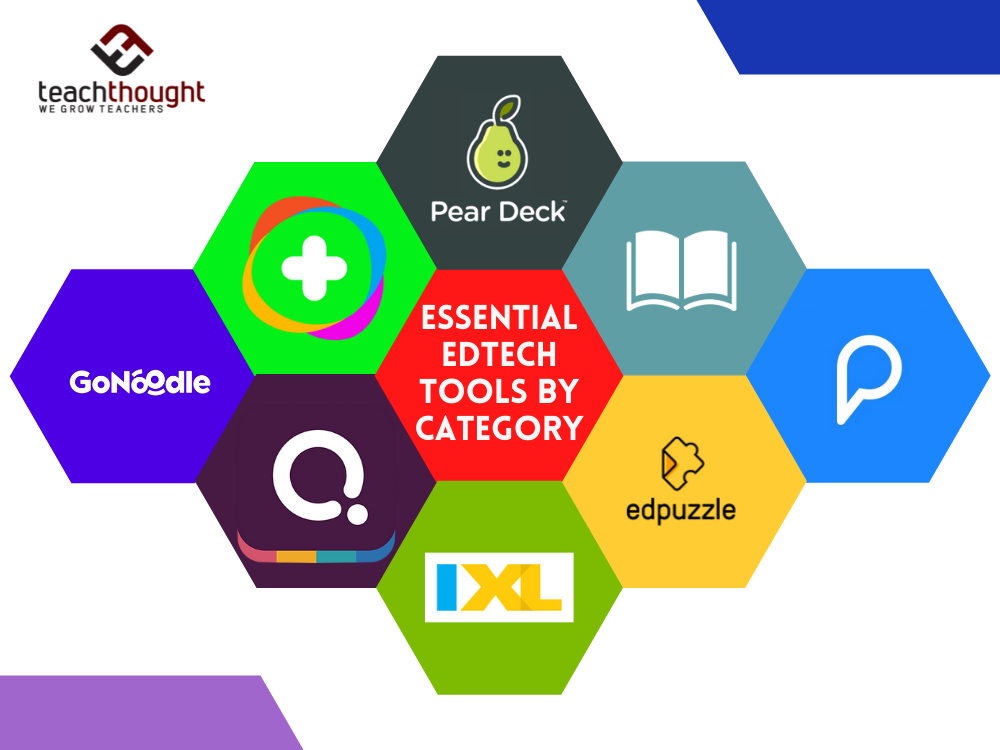
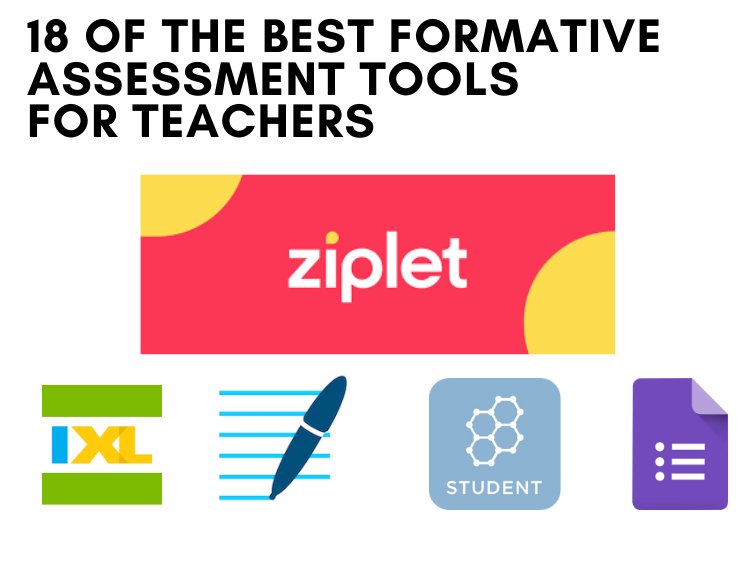
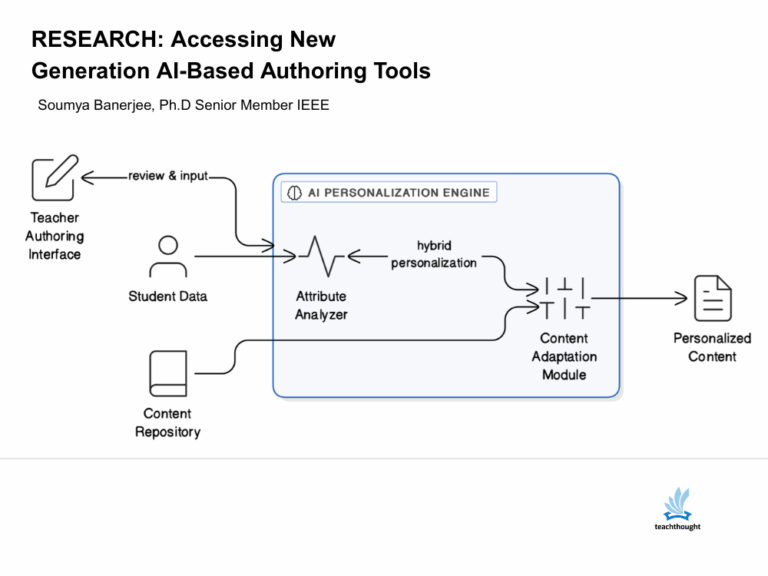


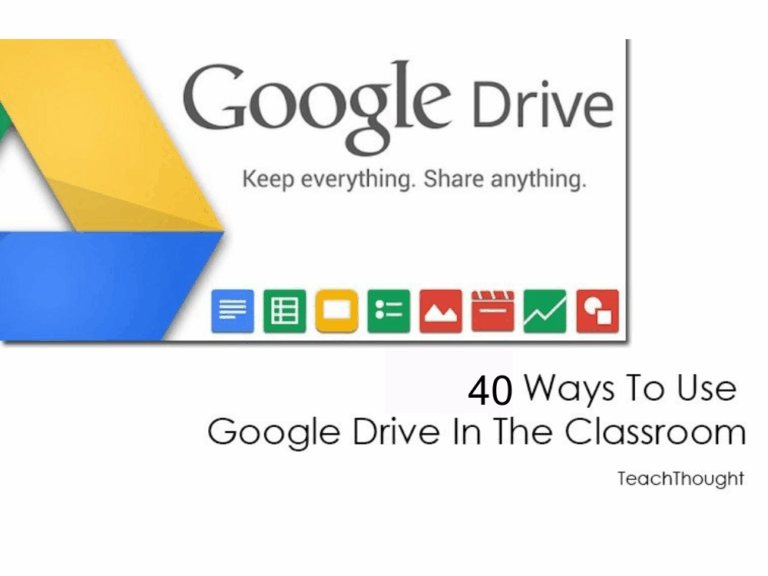
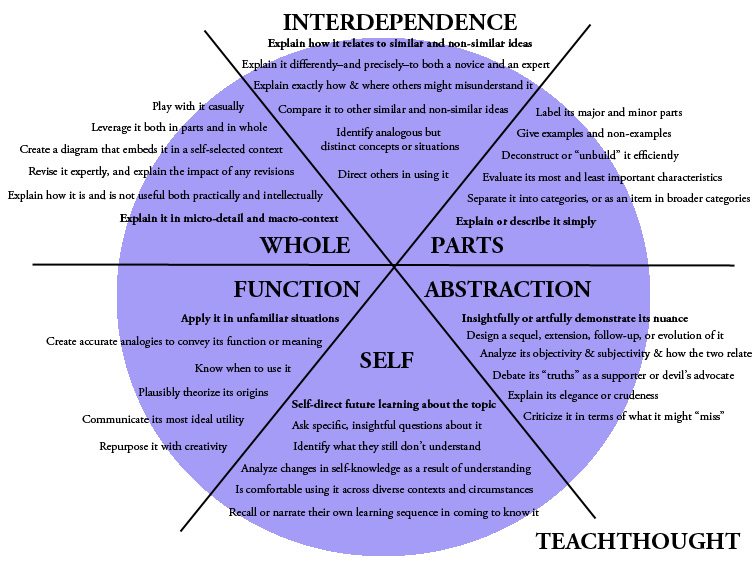
Collaboration, Communication, & Social Learning Tools
These essential edtech tools use collaboration, communication, and social features to help students learn with one another and help teachers connect with families and colleagues. For more focused recommendations, see our guide to the best digital collaboration tools and our collection of technology tools to engage students.
Create video prompts and discussion forums where students can pose, respond to, and comment on other students’ video responses.
Engage students within and across classes using live online polling, surveys, question-and-answer forums, formative assessments, word clouds, and more.
A formative assessment tool that engages students in live competition. Access a content library of thousands of formative assessments on topics ranging from STEM and robotics to SEL, space, civics, and even Disney.
Incentivize students to deliver and apply constructive feedback. Teachers create assignments and rubrics; students submit their work and then provide anonymous feedback using the rubric. Teachers get a complete overview of the process.
Introduce students to the essentials of meditation and mindfulness. Over 25 published studies have demonstrated Headspace’s impact on outcomes like stress management, attention/focus, and compassion.
A go-to for brain breaks. GoNoodle gets students moving while integrating lessons on personal and social wellness and physical/mental health in fun, energetic ways.
AllSides aims to build a stronger democratic society by providing balanced news articles, diverse perspectives, and authentic discussion. Content is categorized according to “left,” “right,” and “center” perspectives.
A collaborative learning app where teachers can create discussion forums, idea boards, timelines, maps, and portfolios. The digital board updates in real time as students contribute.
Used widely in U.S. schools, ClassDojo helps build connected classroom communities. Teachers can reinforce positive skills and values and share photos and videos with families.
A classroom game-show platform where students compete by answering questions on their laptops or phones. Teachers can create “kits,” borrow from others, or import existing quizzes from Quizlet.
Drive meaningful and inclusive student-led discussions using Parlay’s library of open discussion topics created by teachers. Browse, bookmark, publish your own prompts, and curate class portfolios.
A portfolio and communication tool used by millions of teachers, students, and parents. Built-in multimodal tools help capture thinking; families can see and support learning at home.
Combine text, images, audio, and video to design interactive stories, digital portfolios, research journals, poetry books, lab reports, how-to manuals, personal narratives, and comic strips.
Create personalized learning apps and play thousands made by a global community. Teachers can make fun educational activities for a wide range of subjects and ages.
A digital whiteboard for collaborative and remote learning. Record video lessons, co-create content in real time, and livecast your board to students.
A social learning environment where classes can connect online, share resources, and participate in discussions.
A one-stop solution for educators and students designed to protect academic integrity. The toolkit includes a plagiarism checker, an AI detector, and a grammar assistant with LMS integrations and browser extensions.
A safe and secure platform for setting up blogs for yourself or your classroom, encouraging reflection and authentic student publishing.
Can be used to keep in touch with other educators, attend meetings online, or connect classrooms across the world for shared projects and conversations.
A visual bookmarking tool many teachers use to collect lesson plans, project ideas, and inspirational classroom materials.
A learning management platform that lets teachers manage lessons, engage students, share content, and connect with other educators.
A Q&A platform that can be used to connect with other professionals or extend discussion beyond class, especially for older students.
A service that allows the creation of personalized social networks, which can be used for class communities or educator networks.
A platform focused on helping students connect with peers around the world to learn languages and understand other cultures.